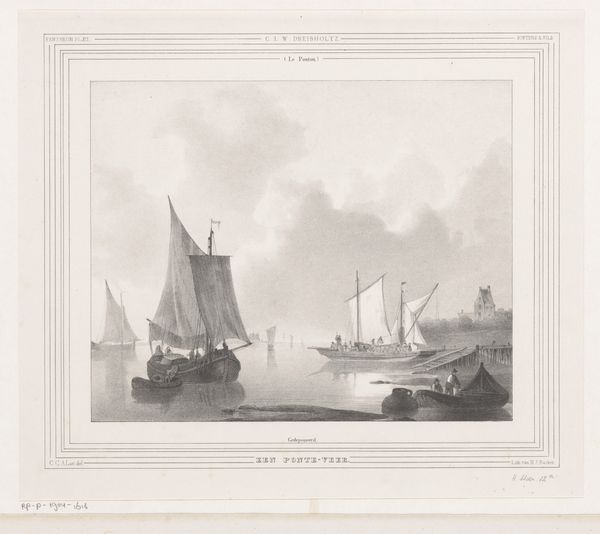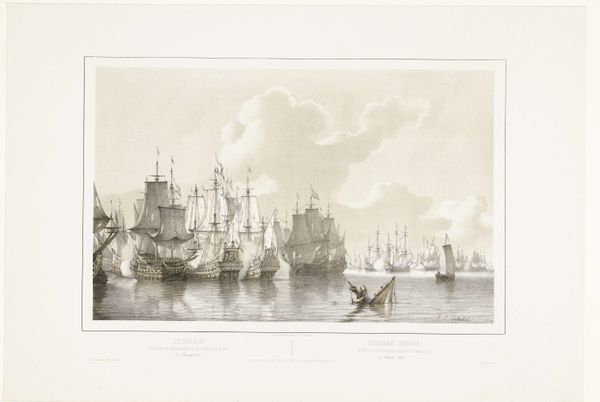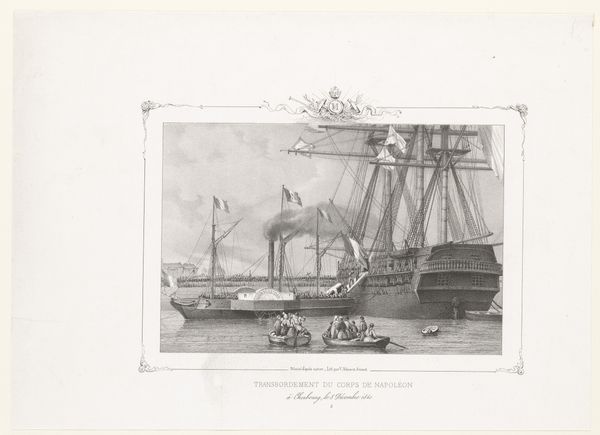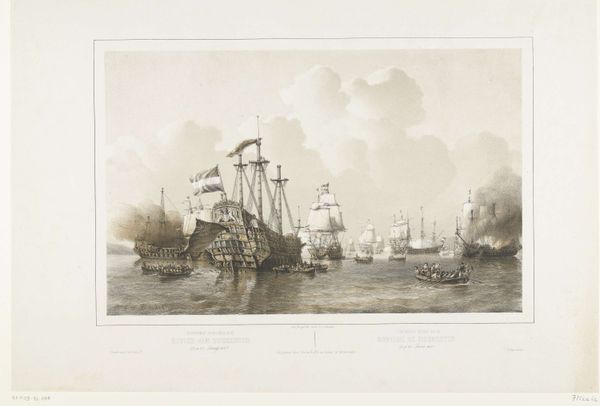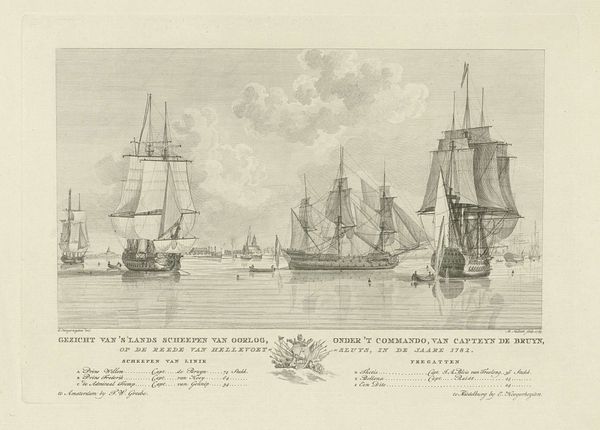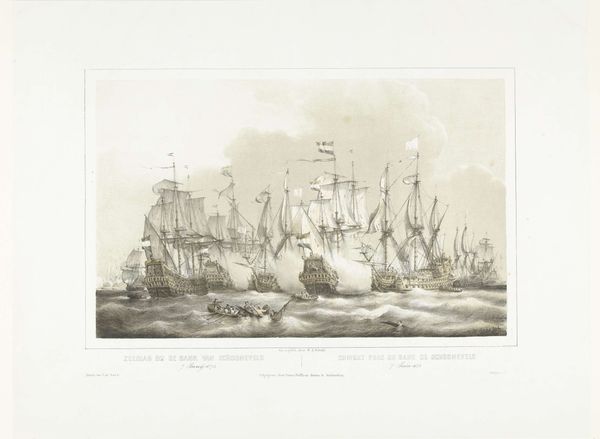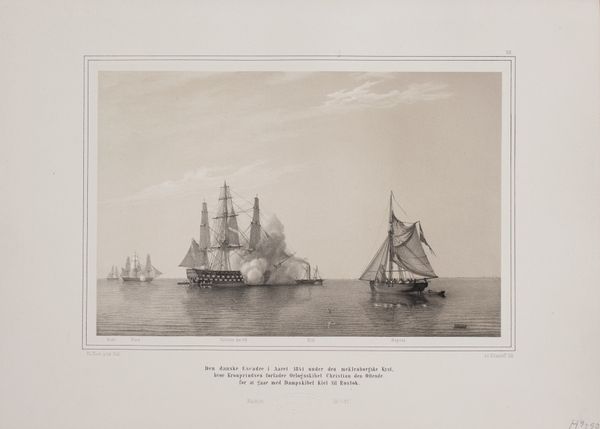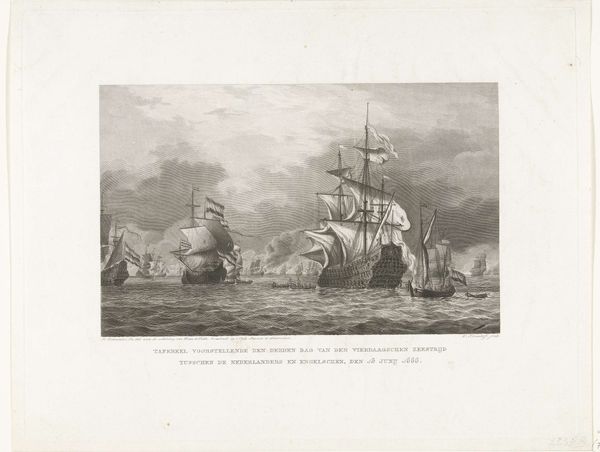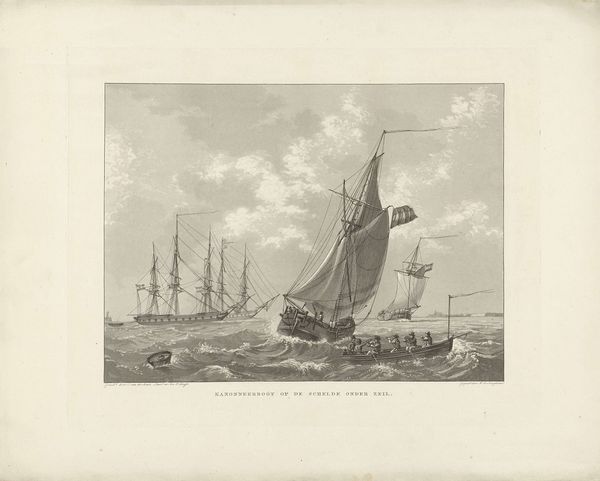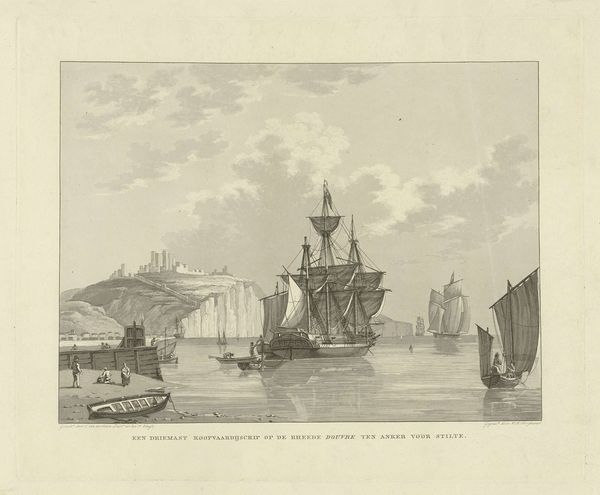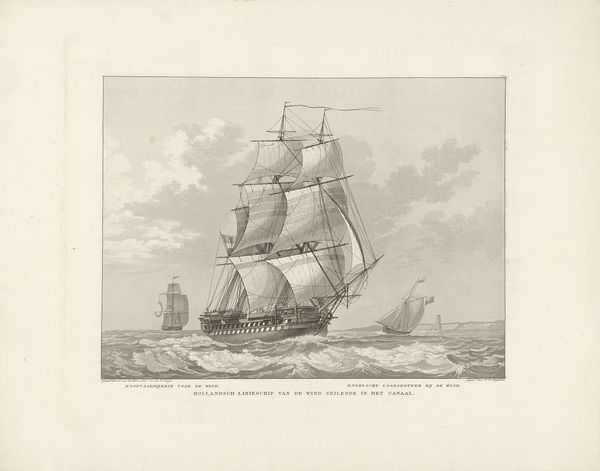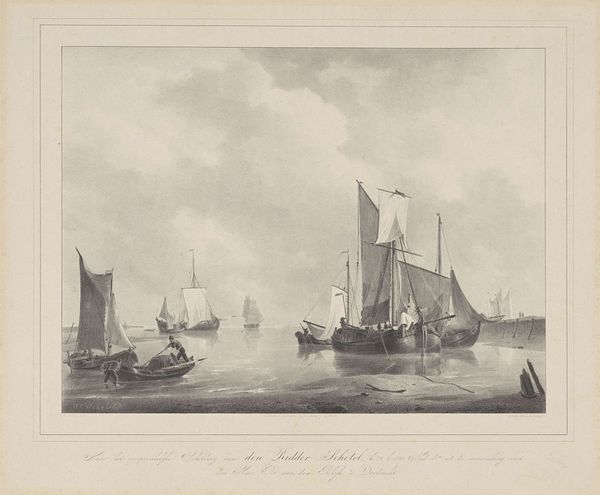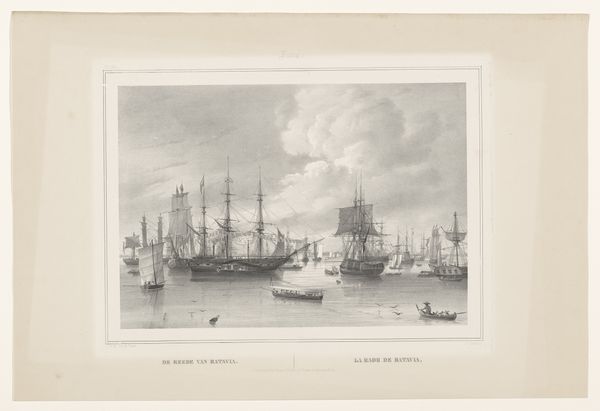
drawing, paper, ink
#
drawing
#
landscape
#
paper
#
ink
#
romanticism
#
genre-painting
#
realism
Dimensions: height 310 mm, width 445 mm
Copyright: Rijks Museum: Open Domain
Editor: So, here we have "Zeilschip in een haven met ruïne" or "Sailboat in a harbor with a ruin" by Gerhardus Fredericus Eilbracht, dating sometime between 1826 and 1854. It’s an ink drawing on paper, currently at the Rijksmuseum. I am struck by its quiet, almost melancholic feel. What do you see in this piece? Curator: I see a pointed commentary on power and the passage of time. The ruined structure juxtaposed with the active harbor is significant. Ask yourself, what does a ruin represent? It’s the crumbling legacy of a once-dominant power, now relegated to the background while commerce continues. Consider how the industrial revolution impacted social structures; what's being lost and gained in the transition? Editor: That’s a really interesting point! I hadn't considered the ruins as a symbol of fading power structures. Does the harbor represent a kind of progress? Curator: It certainly suggests that, doesn’t it? This isn't simply a landscape; it is making a claim about socio-economic shifts, especially in the Netherlands at the time. Look closely at the boats—who do you imagine is on them, and what lives were they living at the time? Editor: Merchants, maybe? Working class families? So much labor to keep a ship sailing, trading goods for all. Curator: Exactly! And that perspective helps contextualize this seemingly simple drawing within a wider historical framework. It pushes us to acknowledge who benefits from this 'progress,' and at what cost. Editor: Wow, I would have walked right by it assuming it was just a nice landscape. I learned a lot! Curator: Me too. It's a reminder that art acts as an active agent in chronicling sociopolitical narratives.
Comments
No comments
Be the first to comment and join the conversation on the ultimate creative platform.
